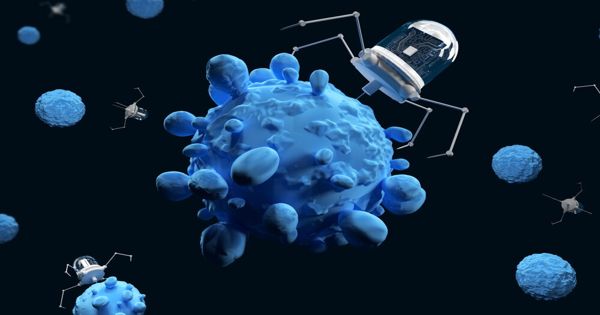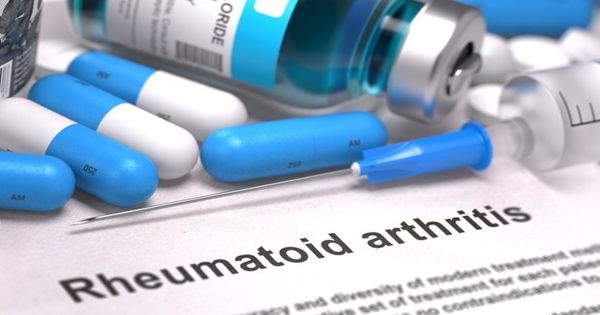Rheumatoid arthritis is a chronic inflammatory condition characterized by joint pain, swelling, and injury. Given the fact that pharmaceutical medications, including steroids, anti-inflammatory drugs, and immunosuppressants, can help sluggish joint destruction and alleviate pain, they have a facet of effects and are not fully impacted.
Rheumatoid arthritis is a chronic inflammatory condition characterized by joint pain, swelling, and injury. While medications, such as steroids, anti-inflammatory drugs, and immunosuppressants, may help delay joint destruction and alleviate discomfort, they have side effects and are not entirely effective. Researchers publishing in ACS’ Nano Letters has now created magnesium-based micromotors powered by hydrogen bubbles that have strengthened rheumatoid arthritis symptoms when inserted into rat joints.
Hydrogen therapy is an emerging and highly promising strategy for the treatment of inflammation-related diseases. Scientists developed tiny magnesium-based motors propelled by hydrogen bubbles, which improved rheumatoid arthritis symptoms when injected into the joints of mice.
Although drinking hydrogen-gas-infused water can help cure rheumatoid arthritis, the results are minimal. Scientists have created what could be a safer solution, however, in the form of tiny injectable gas-emitting “micromotors.” Rheumatoid arthritis has historically been associated with the excessive production of reactive oxygen species (ROS) in infected joints. Not only can these chemical compounds oxidize and degrade cartilage and bone, they also cause the expression of inflammatory proteins known as cytokines.
Scientists have related the emergence of rheumatoid arthritis to the excess production of reactive oxygen species (ROS). ROS can oxidize and degrade cartilage and bone and may activate the expression of inflammatory cytokines. A new form of treatment, hydrogen gas, will neutralize ROS and reduce inflammatory cytokine levels when offered to patients in drinking water. However, the gas is poorly soluble in body fluids and is readily eliminated when administered orally, reducing its medicinal effects. Fei Peng, Yingfeng Tu, Yingjia Li and colleagues decided to find a way to generate and distribute hydrogen gas directly within the flammable joint.

In spite of these limits, scientists at China’s Southern Medical University have set out to establish a means of supplying gas directly to and sustaining arthritic joints for a prolonged period of time. Researchers continued with readily available magnesium microspheres, most of which were covered with a joint lubricant called hyaluronic acid–but one spot on each sphere remained uncoated. Subsequently, when the microspheres were put in a simulated joint fluid, the uncoated magnesium interacted with the water in each sphere and formed a stream of hydrogen gas bubbles. In reality, those bubbles served as a form of propulsion, allowing the spheres to travel inside the fluid. This is why the coated microspheres are described as “micromotors.”
Researchers based their method on magnesium-based micromotors—small spheres that react with water to create hydrogen bubbles that drive the engines. Micromotors were coated with hyaluronic acid, a joint lubricant, leaving a slight space for magnesium to react with water. When put in simulated joint fluid, the micromotors demonstrated prolonged, continuous release of hydrogen bubbles and were able to travel on their own.
The team then implanted micromotors into rat joints that acted as an animal model of rheumatoid arthritis and used ultrasound to image them. Compared to uninjected rats, the vaccinated rats displayed fewer swollen hands, less bone erosion, and lower levels of inflammatory cytokines. While micromotors do need to be studied in humans, they demonstrate significant promise for the treatment of rheumatoid arthritis and other inflammatory diseases; the researchers claim.
While micromotors do need to be tested in humans, they demonstrate considerable potential for the treatment of rheumatoid arthritis and other inflammatory diseases, the researchers claim. It is now hoped that micromotors will one day be inserted directly into patients’ arthritic joints – the spheres would travel around the joint, releasing hydrogen gas and hyaluronic acid at the same time for a long period of time.
In reality, in lab experiments conducted on joints of arthritis rats, micromotor injections have been shown to decrease swelling of the hands, bone degradation, and cytokine levels relative to the untreated control group.















